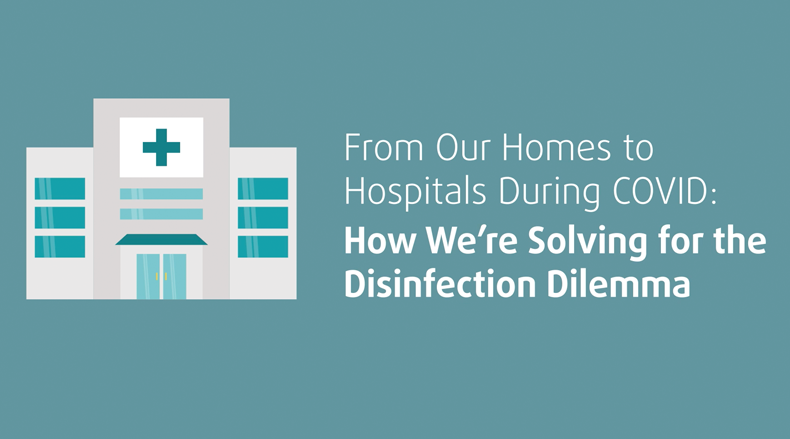The following was published on May 4, 2020 as a LinkedIn blog post by Wassim Berrak, Global Marketing Manager, Medical.


Wassim Berrak, Global Marketing Manager, Medical
Disinfection has recently become a mainstream topic in the news and our everyday conversations. Because of the COVID-19 crisis, we are all increasingly conscientious of cleaning high-traffic surfaces in our homes – like door handles, light switches and our phones. This even extends to disinfecting ourselves with frequent, thorough handwashing practices.
While rigorous disinfection has newly entered our private lives in an unprecedented way, it has long been a hot topic in the medical industry. Just as we are all increasing our cleaning practices to adapt to the times, hospitals are implementing disinfecting procedures more aggressively than ever before.
The state of hospital disinfection
Disinfection has always been an important issue in the healthcare industry. In fact, there are 1.7 million new hospital-acquired infections in the United Sates alone each year, and of those infections, almost 100,000 result in death. It is a tragic reality of the modern healthcare system.
Hospitals have responded over the years by implementing new disinfection procedures, increasing disinfection frequency, and sourcing new, more harsh cleansers in order to combat these statistics and increase patient safety. However, this shift created a new problem. The more aggressive cleaning schedules and cleansers and disinfectants began to impact the integrity of the plastic components of medical devices, resulting in accelerated device failure. This reduced device lifespan also placed burdensome costs on healthcare facilities.
Solving for the disinfection dilemma
Trinseo rose to the challenge and introduced EMERGE™ PC/PET 9000 CR Advanced Resins. This rigid, medical-grade plastics solution has superior chemical resistance properties, outstanding toughness and impact strength for enhanced product life, and excellent visual appearance. These plastics were exposed to dozens of professional-grade cleansers and disinfectants during development to ensure they were capable of withstanding aggressive cleaning and disinfection, giving medical devices a longer shelf-life. Trinseo also has a line of soft-touch Thermoplastic Elastomers under the brand names MEGOL™ MED and RAPLAN™ MED that have demonstrated chemical-resistant properties.
Because many medical devices require rigid and soft plastic components (e.g., overmolding), both materials need to have very good chemical resistance in order for the overall product to withstand increased disinfection without impacting product integrity or lifespan. Trinseo is uniquely positioned as a solutions provider capable of delivering both types of complementary materials.
The COVID-19 pandemic has made the healthcare industry and individuals more conscious of disinfection than ever before, and I predict this will only intensify. This means that disinfectants and disinfection procedures will become even more aggressive than they already are – perpetuating the need for materials that can withstand these practices while also retaining the properties we have come to expect.
It is a change that will benefit us all, and also an exciting future challenge for the plastics industry. I look forward to witnessing the innovative new solutions that Trinseo and the plastics industry as a whole will deliver in response to this trend.
Corporate News
Trinseo’s Chuck Fifelski Discusses EIFS & Stucco Applications in Walls & Ceilings Magazine
April 16, 2024
Corporate News
Trinseo Announces Release Date and Conference Call for its First Quarter 2024 Financial Results
April 11, 2024
Corporate News
Trinseo Introduces Groundbreaking Flame-retardant Plastic Grades Without Using PFAS Additives During Manufacturing Process
April 09, 2024